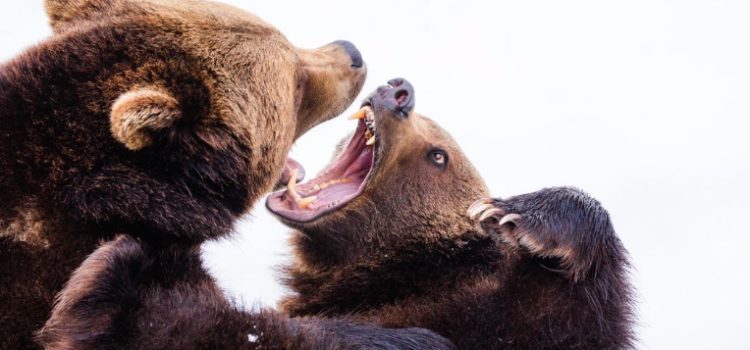

This article is an excerpt from the Shortform book guide to "The Selfish Gene" by Richard Dawkins. Shortform has the world's best summaries and analyses of books you should be reading.
Like this article? Sign up for a free trial here .
What is territorial aggression? Is there an evolutionary explanation for why territorial aggression exists?
Territorial aggression is an Evolutionarily Stable Strategy (ESS) in which a population of animals aggressively protects their territory and retreats when they enter the territory of another aggressive animal. The strategy is only stable if the whole animal population sticks to it.
Read more about the evolutionary need for aggression, including territorial aggression.
The Need for Aggression
A population of animals actually needs a particular balance of aggression and pacifism in order to be stable—too many aggressive (selfish) individuals will constantly fight each other, and too many peaceful individuals will be easily overpowered and exploited by a few aggressive ones. A stable population is the best situation for selfish genes trying to survive through as many generations as possible, without being overwhelmed by other types of animals.
Animals will naturally compete with one another—there are only so many resources to go around, so only a limited number of genes’ hosts can reproduce. Members of different species may compete for various things—for instance, blackbirds and moles might compete for earthworms—but members of the same species will be in much more direct competition. This is because they tend to live in the same environment and need the same things, including food sources and mates.
Given that fact, it seems logical that the best way to preserve one’s own genes is to kill—and possibly eat—your rivals. However, while murder and cannibalism do happen in nature, it’s not as common as an uninitiated observer might think.
The problem is that fighting has great costs associated with its potential benefits. First of all, fighting takes a great deal of energy that might be better spent looking for food or breeding. It also naturally carries the risk that you’ll wind up dead or maimed instead of your rival. A less direct, but still very real risk, is that by eliminating one rival you accidentally help another who was also competing with the individual you killed.
Therefore, before animals fight in earnest, they have to somehow weigh the risk against the benefits. Fighting another member of one’s own species is extremely risky, since they’re likely to have similar physical abilities. In fact, animals of the same species usually “fight” in a way that’s comparable to boxing or fencing: There are rules, it’s clear when the bout is over and who won it, and (barring an accident) neither party gets seriously hurt.
Territorial Aggression
There are other factors besides simple strategy that can determine whether a creature will attack or retreat. A few important ones are the animal’s size, age, and strength compared to its opponent.
However, one of the most notable factors in nature is territory. A territorial aggression strategy where creatures aggressively protect their own territory, and run away if they invade another’s territory, is quite common in nature. This by itself could be an ESS (Evolutionarily Stable Strategy)—if all members of the population stick to it, contests will rarely (if ever) result in injury or wasted time.
The opposite of the territorial aggression strategy—resident retreats, intruder attacks—would also be stable if the whole population followed it, but this is much rarer in nature. There are obvious flaws with that strategy. For example, it has residents constantly running and shifting territories, which is an enormous waste of time and energy.
Biologists often wonder what advantage there is to territorial aggression, since it runs the risk of injuring both the resident and the intruder. However, in light of ESS, this may be the wrong question to ask; perhaps animals simply defend their territory because that’s the ESS that has arisen.
The ESS is one more example of how genes that work well within their environment tend to be favored by natural selection. This is just as important, if not more so, than whether those genes are individually “better” than their rival alleles.

———End of Preview———
Like what you just read? Read the rest of the world's best book summary and analysis of Richard Dawkins's "The Selfish Gene" at Shortform .
Here's what you'll find in our full The Selfish Gene summary :
- Why organisms don't matter, only genes do
- How all life forms begin with a replicating molecule
- How species need to balance aggression and pacifism to survive






